Non-classical effects in the statistical properties of light. R. Loudon in Rep. Prog. Phys. 43:913 (1980). What the paper says!?
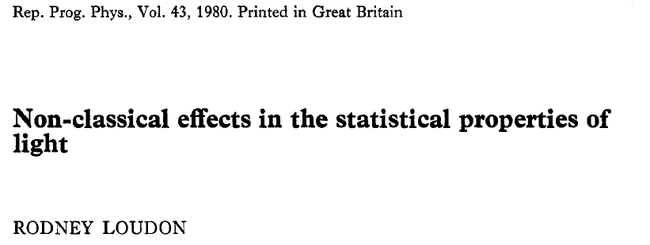
This is a short review «concerned with the contributions from the study of the statistical and fluctuation properties of light towards a fuller understanding of the relations between classical and quantum theories»:
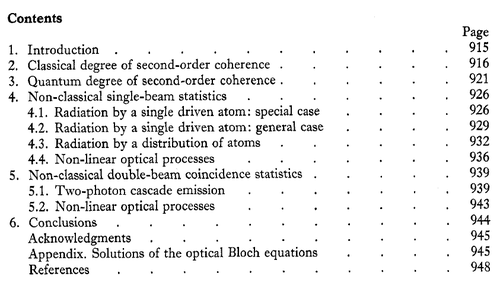
There is a nice treatment of correlations of classical fields, emphasizing anomalous contributions (cf. discussion after Eq. (5.14) for their possible observation in previous experiments), as well as a good discussion of Cauchy-Schwarz violations, since they subtend most of the paper.
There is a prejudice for single vs two-beams correlations in this pre-two-photon spectrum era, which leads to a separation between those cases, that fail to be put in perspective:
Most attention is given to the single-beam resonance fluorescence measurements and to the observations of double-beam intensity correlations in two-photon cascade emission.
But the connection is so obvious that it is made repeatedly anyway.
It gives analytical solutions (detailed in appendix) for resonance fluorescence (e.g., Eq. (4.28)). It also delves into some details into the case of $N$ atoms.
It also provides another example of "probably hand-made" single-photon clicks (compare with actual such clicks):
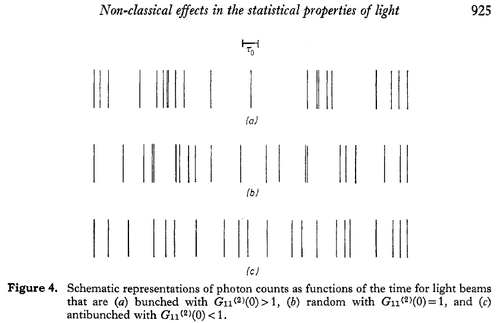
The following is what we criticize with our Origin of Antibunching in Resonance Fluorescence[1] which in the Heitler regime is due to interference between squeezing and coherence:

Then Section 5 studies cascaded emission, with a particular focus on Clauser's seminal experiment.[2] Rate equations are solved (quantum regression for $tau$ dynamics) and the following results are obtained:

The interpretation of the last equation is interesting:
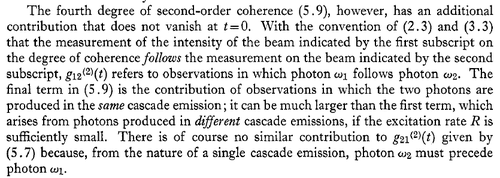
To compare with experiments, the case of $N$ atoms is also considered. The following interesting result is obtained:
This makes violations of inequalities more difficult but still possible:
And this is what Clauser[2] observed (parameters in Eq. (5.13)):
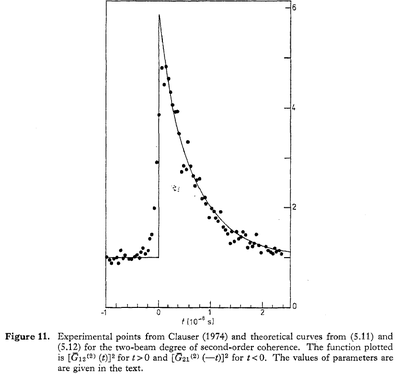
Finally, there is a discussion of non-linear production of correlations through parametric down conversion (Section 5.2).
References
- ↑ Origin of Antibunching in Resonance Fluorescence. L. Hanschke, L. Schweickert, J. C. López Carreño, E. Schöll, K. D. Zeuner, T. Lettner, E. Zubizarreta Casalengua, M. Reindl, S. Filipe Covre da Silva, R. Trotta, J. J. Finley, A. Rastelli, E. del Valle, F. P. Laussy, V. Zwiller, K. Müller and K. D. Jöns in Phys. Rev. Lett. 125:170402 (2020).

- ↑ 2.0 2.1 Experimental distinction between the quantum and classical field-theoretic predictions for the photoelectric effect. J. F. Clauser in Phys. Rev. D 9:853 (1974).